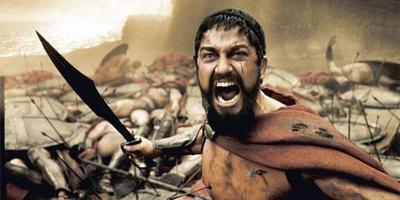once made the the Taj Mahal disappear for over a minute. It has been his most famous act as an internationally acclaimed magician. When asked how he did it, Harary's answer was: “It was the perfect illusion."
Through March, the American illusionist will host his 90-minute, over-the-top, hyper-sensory spectacle at New Delhi's Kingdom of Dreams, in the 840-seater Nautanki Mahal.
The blue-domed, gold-studded, rose-petaled, outrageous design of the recently opened Kingdom of Dreams is a display of India’s heritage and artists traditions at the least, and a riotous, ironic spoof on India’s kitsch aesthetic at its best.
The other live act inside the Kingdom is Bollywood musical "Zangoora, the Gypsy Prince" which has been selling out to audiences from around the country since it opened in September 2010.
Culture Gully showcases each state of India in its traditional architecture in a Venetian canal atmosphere, with astrologers, tarot readers and food and artisans from each state.
One of the (ironic) highlights is the mock Indian wedding, complete with an acting bride and groom, with a host of dancers and musicians following. Their tag line: “A Magical, Mystical & Memorable Experience of India.”
This same idea of India becomes the literal stage to unite the worlds of control and fatalism, of fear and safety, and of ordinary, extra-ordinary and magic. In the other-worldliness of The Kingdom of Dreams, magician Harary is right at home.
Trick o' techno, mind over magic
His entrance is nothing short of a high-budget sci-fi film, as a giant silver spaceship peels open to reveal a man in a silver jacket, arms welcoming loud applause, black shades, spiked hair.
The glitterati of the bedecked purple and gold Nautanki Mahal, where "Mega Magic" is staged, is perfectly congruent to Franz Harary’s own theatrical embellishments.
Cinema screens light up 180 degrees around the stage, confetti and foam flies from the air and 10 women in mini skirts and bikinis enter. Rock and roll blasts from the speakers.
Smoke billows from every corner: this is the first and most physical manifestation of the mysterious haze that surrounds Harary’s work.
He walks past the ladies casually -- we realize his powers of seduction as the evening grows -- and picks one. He puts her in a box, covers the box in a sheet and lets his fingers hover and dance, appealing to the age-old gesture of abracadabra.
The sheet is removed and much to the disappointment of many in the audience, the girl is nowhere to be found. In her place lies, instead, a stray, furry, grey cat from a shelter, purring almost as his previous, bikini-clad avatar might have.
This is the magician’s prestige: the seduction, the secret and the eternal un-resolution.
It is this last factor that separates magic from other entertainment forms and likens it more to life itself where hints inspire us to search for answers that finally elude us.
But it is Harary’s almost hyper-human view of magic that is intriguing. He insists that his magic is only based in optical illusions that take advantage of our limited senses, and that real magic exists in the everyday unknowns of the world outside the stage.
His act opens with this thought-provoking sentence: "Magic by its definition is anything outside the laws of science. As science progresses, magic's evolution must remain just ahead of it…
"In a sense, surfing the wave of technology. Scientific discovery depends on mankind's ability to dream. Magic rekindles that child-like ability.
"Linked together in a perpetual dance, magic and science are forever advancing each other… Each one driving the other forward at the speed of wonder."
So just as science oddly appeals to our sense of logic, so does Harary’s magic.
As he has done for Michael Jackson, Janet Jackson and Alice Cooper concert tours, Harary employs new, complex technological systems and formulae to achieve a cat in place of a woman, endless streams of paper emanating from a mouth, a lady divided in eight inside a box appearing unharmed, one woman’s torso attached to the legs of another, a man splintered with iron rods disappearing, a ring borrowed from an audience appearing in the hand of a woman in a bathing suit who miraculously appears inside a previously empty aquarium, a man levitating even as a hoopla-hoop swipes the air above and below him.
Harary capitalizes upon our sense of fear, our sense of desire and the ultimate knowledge that magic will keep the protagonist safe.
And it is this very belief that Harary utilizes, rather meta-theatrically, at the end when he gets inside a heavy chamber hung from the ceiling of the theater and midway, the box breaks open and a crew member appears with headphones saying, "Stop the show!"
Harary’s hands and feet are seen flailing in the air, his breath loud against the microphone. The audience is -- if only for a moment -- slightly alarmed.The box is finally revealed: and there is no one in there. Something shiny and silver glitters from where the audience is seated. A spotlight hits Harary, his hair raised, wearing a silver jacket -- an old magician’s costume -- smiling with irony and triumph. Harary’s uniqueness is in his utilization, ultimately, of constructed, human skill: he is an engineer before a magician, designing each instrument to carry out his illusions and relying on our sense of wonder to do the rest.




I wish I cud be here 1 day.....:D
ReplyDelete